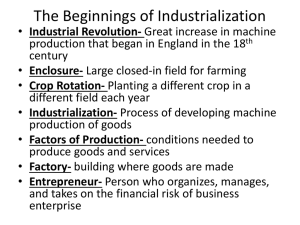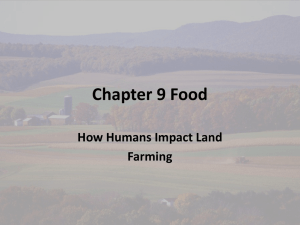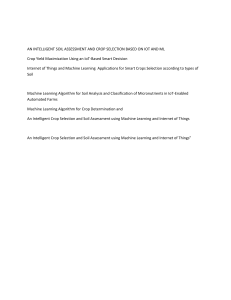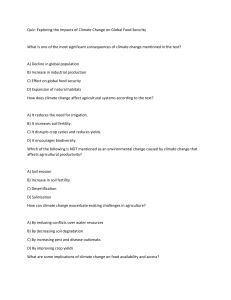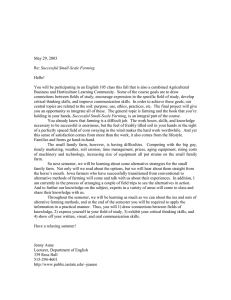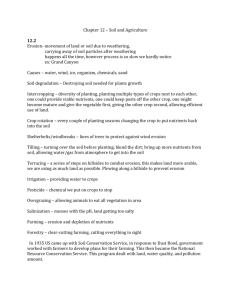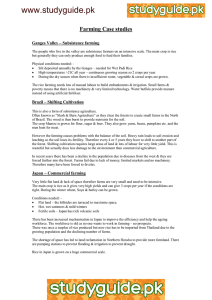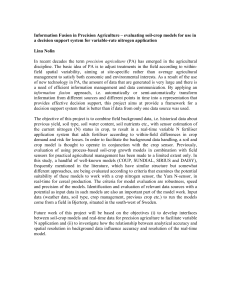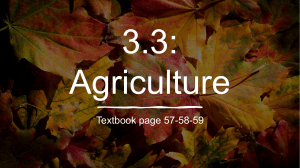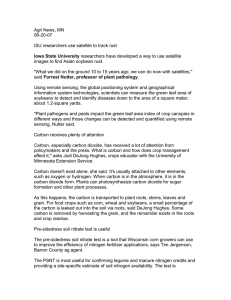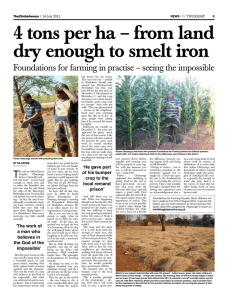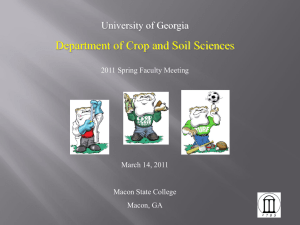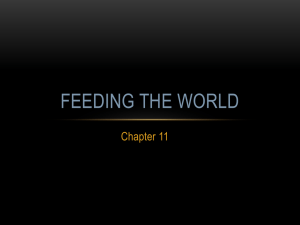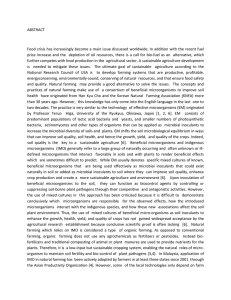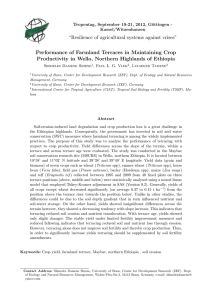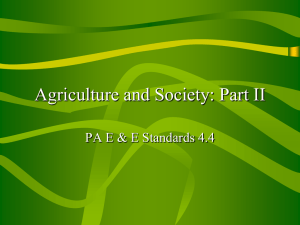www.studyguide.pk Agriculture in LEDCs
advertisement
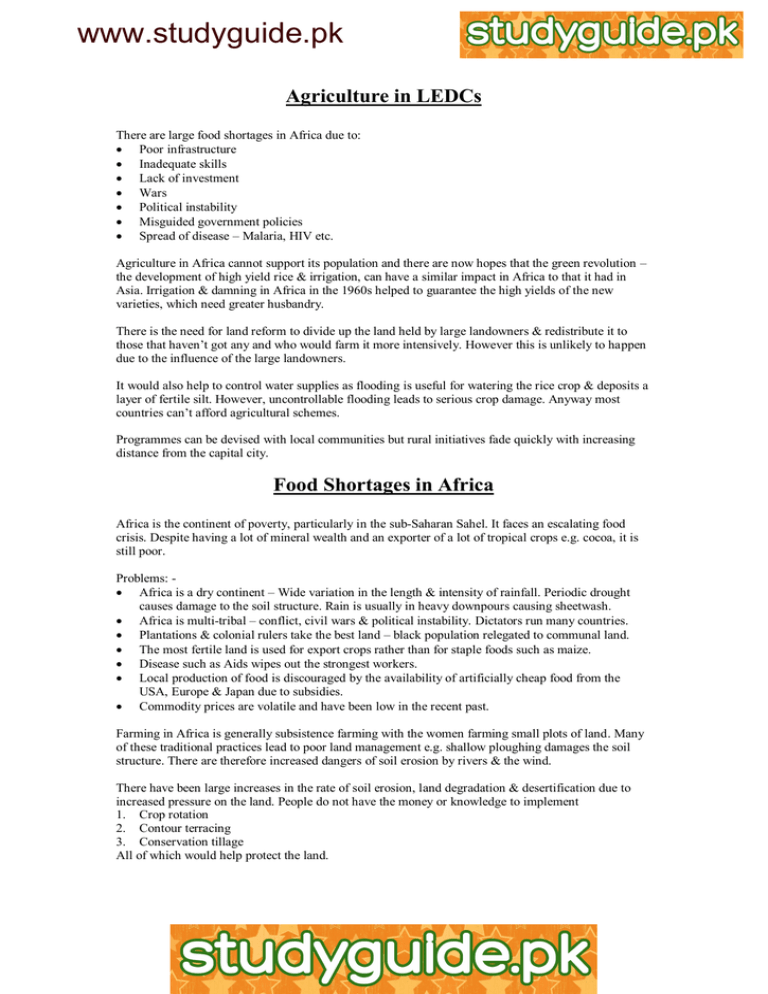
www.studyguide.pk Agriculture in LEDCs There are large food shortages in Africa due to: Poor infrastructure Inadequate skills Lack of investment Wars Political instability Misguided government policies Spread of disease – Malaria, HIV etc. Agriculture in Africa cannot support its population and there are now hopes that the green revolution – the development of high yield rice & irrigation, can have a similar impact in Africa to that it had in Asia. Irrigation & damning in Africa in the 1960s helped to guarantee the high yields of the new varieties, which need greater husbandry. There is the need for land reform to divide up the land held by large landowners & redistribute it to those that haven’t got any and who would farm it more intensively. However this is unlikely to happen due to the influence of the large landowners. It would also help to control water supplies as flooding is useful for watering the rice crop & deposits a layer of fertile silt. However, uncontrollable flooding leads to serious crop damage. Anyway most countries can’t afford agricultural schemes. Programmes can be devised with local communities but rural initiatives fade quickly with increasing distance from the capital city. Food Shortages in Africa Africa is the continent of poverty, particularly in the sub-Saharan Sahel. It faces an escalating food crisis. Despite having a lot of mineral wealth and an exporter of a lot of tropical crops e.g. cocoa, it is still poor. Problems: Africa is a dry continent – Wide variation in the length & intensity of rainfall. Periodic drought causes damage to the soil structure. Rain is usually in heavy downpours causing sheetwash. Africa is multi-tribal – conflict, civil wars & political instability. Dictators run many countries. Plantations & colonial rulers take the best land – black population relegated to communal land. The most fertile land is used for export crops rather than for staple foods such as maize. Disease such as Aids wipes out the strongest workers. Local production of food is discouraged by the availability of artificially cheap food from the USA, Europe & Japan due to subsidies. Commodity prices are volatile and have been low in the recent past. Farming in Africa is generally subsistence farming with the women farming small plots of land. Many of these traditional practices lead to poor land management e.g. shallow ploughing damages the soil structure. There are therefore increased dangers of soil erosion by rivers & the wind. There have been large increases in the rate of soil erosion, land degradation & desertification due to increased pressure on the land. People do not have the money or knowledge to implement 1. Crop rotation 2. Contour terracing 3. Conservation tillage All of which would help protect the land.
